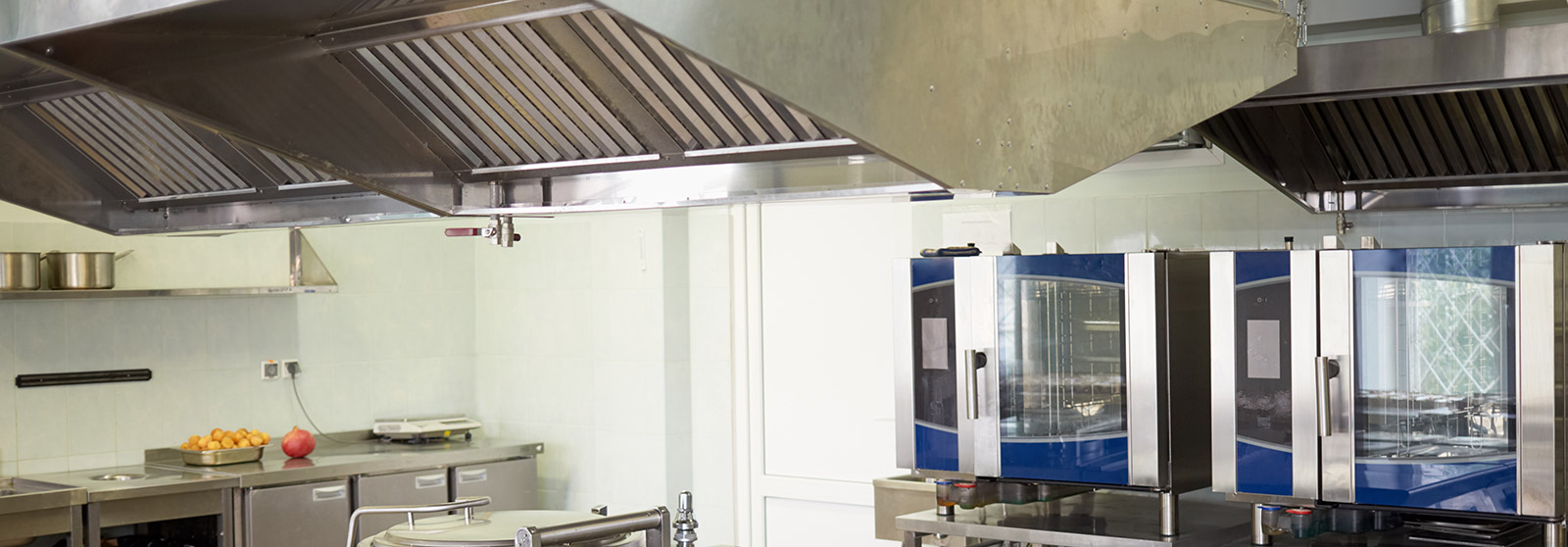Understanding Commercial Kitchen Hood Systems

A commercial kitchen hood system is a vital piece of equipment for any commercial kitchen. Manufactured to vent heavy smoke, grease and odors from commercial kitchens, hood vents remove hazardous pollutants from the air, help reduce grease and smoke buildup and maintain the air quality not only in the kitchen, but throughout the entire restaurant. These powerful systems are made of durable materials, can be placed side by side, or as one large unit above the cooking area. Understanding the type of commercial kitchen vent system your foodservice operation requires, and the basics involved, will help you find the right system for your kitchen.
A commercial kitchen hood system is also required by law for every restaurant, including food trucks, that utilize specific types of commercial kitchen equipment. While laws may vary from state to state, it is imperative that you understand the basics of commercial kitchen hood systems and what needs to be installed for your specific cooking operation in order to maintain the health and safety of your kitchen staff and customers.
Types of Commercial Kitchen Hoods
There are two types of commercial kitchen hoods, type 1 and type 2. Type 1, also known as grease hoods, are designed to exhaust grease, oil, and smoke as well as heat, moisture, and odors from the kitchen. They include removable filters that help extract the oil and grease from the air before it enters the rest of your ventilation and duct system. These hoods often come complete with a fire suppression system to reduce the risk of fire, which at the same time allows your establishment to meet any building and fire safety codes.
Type 2 filters, also known as condensate hoods, exhaust heat, moisture and cooking odors from the air, but not grease and smoke. They can be found over dishwashers, steamers, steam tables and certain types of pizza ovens that don't have built in hoods. Certain types of convection ovens will not require a hood vent since they use a fan to circulate the air inside the oven.
There are certain types of foodservice establishments that don't require commercial hood vents at all. These include estalishments that heat up foods in a microwave, that use electric countertop cooking equipment such as panini presses, waffle makers, countertop fryers and countertop pizza ovens. Or establishments that use equipment such as hot dog rollers, toasters and rice cookers.
Once you have an understanding of the type equipment you will be using in your commercial kitchen based on your concept and menu, figuring out the type of hood or hoods you will need will be your next step.
Other Requirements
Other requirements for a commercial kitchen hood system include exhaust ductwork. Ductwork provides the means of transferring the polluted air, grease and cooking heat from the hood to the exhaust fan. The exhaust fan will then move the heat and polluted air out of the building.
All components of the exhaust fan must be accessible for cleaning and inspection and it must be able to contain and drain any excess grease. Build-up of grease is a major health hazard and a major cause of kitchen fires. For the exhaust system to work properly, make-up air is required to ensure that any air that is filtered out of the building is replaced in equal amounts.
Some Relevant Laws and Codes
Every state has laws regarding the ventilation and installation of hood vents in commercial foodservice operations. All of these codes originate from either the International Mechanical Code (IMC) or the National Fire Protection Association (NFPA) Standard # 96 for Ventilation Control and Fire Protection of Commercial Cooking Operations. Local codes are written and published by local building officials by taking elements of one or both of these standards, and tailoring them to the particular city, state or county. Therefore, before you invest in a commercial kitchen hood system, check with your local building officials to ensure you are on par with local requirements.
Commercial Kitchen Hood Installation Requirements
Local codes require certain rules to be followed regarding the installation of hoods in any commercial kitchen. These regulations include the material that the hood must be constructed of, the elevation of the hood above the cooking surface, the type of supports the hood has, and other requirements that ensure the safety of the positioning of the hood and how it will be most effective. Therefore, it would not be unusual to see several type 1 hoods and type 2 hoods in one establishment. For example a single type 1 hood over a open flame grill and a larger type 1 hood over the fryer, range and griddle, and a type 2 hood over the dishwasher and steamer.
Purchasing Your Commercial Kitchen Hood System
Due to the numerous considerations involved in purchasing a commercial kitchen hood system, including types of hoods, number of hoods, ductwork, ventilation, exhaust fans, grease filters, make-up air, fire suppression systems and etc., reaching out to a specialist in the commercial hood business in your location, is your best option for purchasing a system just right for your needs.
Found this article helpful? Read more relevant articles and how-to's in the food service industry.